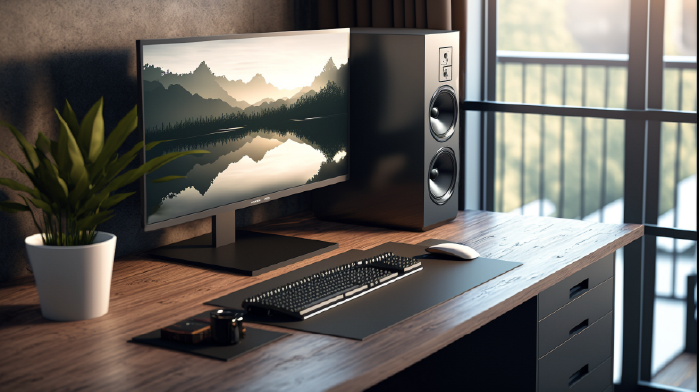Designing an Aesthetically Pleasing Office: Enhancing Productivity and Well-Being
In the dynamic world of modern workplaces, office aesthetics have emerged as a driving force in shaping employee productivity, creativity, and overall well-being. Gone are the days when offices were mere utilitarian spaces.
Today, the strategic integration of aesthetic office décor, pleasing office supplies, and thoughtfully selected interior design elements can transform an ordinary workspace into an inspiring haven.
Setting the Stage: Aesthetic Office Décor in the Modern Workplace

Office aesthetics play a pivotal role in influencing employee satisfaction and motivation. According to a survey conducted by Steelcase, 94% of employees consider the office environment an important factor in their job satisfaction.
Let’s explore how various design elements impact the overall aesthetics and functionality of an office:
1. The Psychology of Aesthetic Office Décor
Best Colors for Office Productivity
Colors have a direct impact on our emotions and focus. Strategic use of colors in office décor can stimulate creativity and enhance concentration. Consider the following color insights:
- Cool tones like blue and green promote calmness and focus.
- Vibrant accents of yellow and orange infuse energy and innovation into the workspace.
2. Influence of Office Layout on Productivity
The arrangement of office furniture and the overall layout significantly affect workflow and collaboration. An efficiently designed office space encourages seamless movement, minimizes distractions, and fosters communication. Consider these layout tips:
- Efficient flow: Arrange workstations to allow easy movement between desks and common areas.
- Collaboration zones: Create dedicated spaces for team discussions and brainstorming sessions.
- Personalization: Allow employees to customize their workstations for comfort and productivity.
3. The Role of Desk Lamps and Natural Light in Office Aesthetics
A well-lit workspace is essential for maintaining alertness and reducing eye strain. Incorporating desk lamps and maximizing access to natural light not only contributes to aesthetic appeal but also ensures that employees are physically comfortable and engaged throughout the day. Consider these lighting strategies:
- Task lighting: Provide adjustable desk lamps for focused work.
- Large windows: Position workstations near windows to maximize natural light.
- Lighting temperature: Opt for warm or neutral lighting to create a pleasant ambiance.
4. Keep the Area Tidy and Free of Clutter
A cluttered workspace can negatively impact aesthetics and productivity. Encourage employees to declutter their desks regularly. Provide storage solutions like drawers, shelves, and filing cabinets to keep essential items organized.
5. Add Personal Touches
Allow employees to personalize their workspaces with family photos, plants, or artwork. Personal touches create a sense of ownership and comfort. Consider adding communal spaces with cozy seating for relaxation and informal interactions.
6. Include Greenery
Indoor plants not only enhance aesthetics but also improve air quality and well-being. Choose low-maintenance plants like succulents, snake plants, or peace lilies. Greenery adds a refreshing touch to any office environment.
Conclusion
Designing an aesthetically pleasing office goes beyond visual appeal—it directly impacts employee satisfaction, creativity, and productivity. By understanding the psychology of colors, optimizing office layouts, prioritizing lighting, and maintaining a clutter-free environment, you can create a workspace that inspires and supports your team.
Remember, a well-designed office isn’t just about aesthetics; it’s about fostering a positive work culture and promoting well-being.